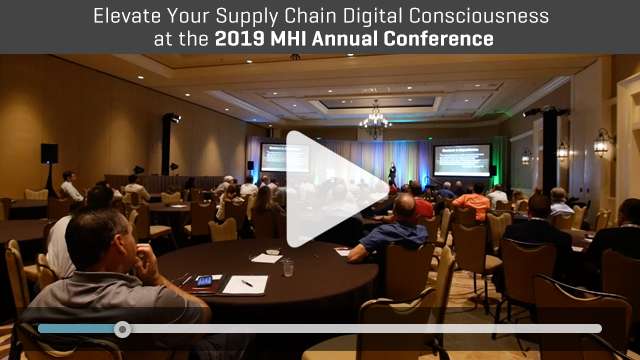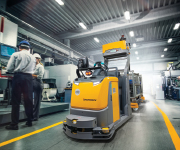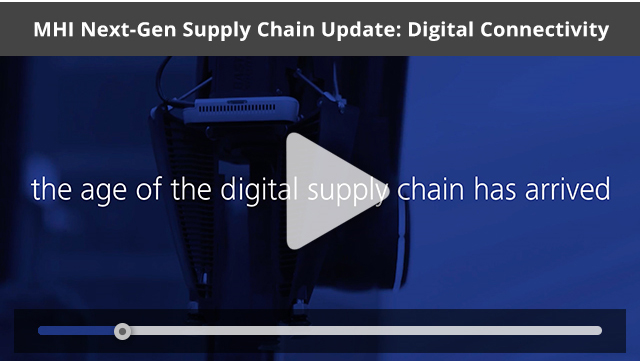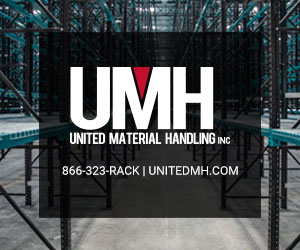 |
||||||||||||
| Archive | Subscribe | Send to a Friend | www.mhi.org | Solutions Magazine | ||||||||||||
|
Top Story
MHI Updates
As part of MHI view's ongoing video program, this episode, Next Gen Supply Chain Update: Digital Connectivity, is part of the four-part series based on the 2019 Annual Industry Report.
Escalating customer expectations for service that is better and faster is mounting pressure on supply chains to perform flawlessly, efficiently and transparently. Falling behind during this critical time can have catastrophic consequences. That’s why the 2019 MHI Annual Industry Report includes a digital supply chain adoption framework and assessment tool - to help companies identify where they are and how to move forward with digital adoption.
As part of MHI view's ongoing video program, this new episode focuses on Elevating Your Supply Chain Digital Consciousness at the 2019 MHI Annual Conference.
Attaining elevated digital consciousness means identifying and implementing the technology and processes that will enable cost reduction, risk mitigation and improved customer experience. Attend the 2019 annual conference and take the first step toward transforming your supply chain. To learn more about MHI's 2019 Annual Conference, visit www.mhi.org/conference.
 Technology and Innovation
Supply Chain Digest—U.S. distribution jobs continue rapidly expand, a function of a strong economy, the impact of ecommerce and, frankly, Amazon, which continues to throw up fulfillment centers that employ thousands of workers on a regular basis. The overall jobless rate in the US is just 3.6%, meaning just about everyone who wants a job has one. But somehow shippers have been able to keep expanding the labor pool.
SupplyChainBrain—Emerging digital technologies and the consequent need for new capabilities are disrupting all aspects of business: people, process, and technology. Today’s supply-chain operating models are being challenged to deliver unprecedented levels of agility and economic value. To survive and thrive, businesses today require invigorated and innovative supply-chain leaders.
Supply Chain Trends
Supply Chain Dive—According to a new report from DHL Supply Chain, out of 900 logistics and supply chain decision makers surveyed, 60% said their organizations had yet to fully implement an e-commerce strategy despite recognizing its business value. The majority of B2B and B2C enterprises represented in the survey said they were falling behind on implementation due to constantly shifting consumer expectations, limited resources and other urgent business priorities.
Supply Chain Management Review—The cost of tariffs gets a lot of popular media attention, but it’s a shallow treatment of a complex disease. Protectionism and tariffs’ greatest impacts are their opportunity costs. In the short run we can afford to pay a little extra for protectionism, yet in the long run they can deprive nations of important components of their livelihood.
Manufacturing
Modern Materials Handling—U.S. manufacturing technology orders rose to $378.4 million in May, an increase of 7.3% over the previous month, according to the latest U.S. Manufacturing Technology Orders Report published by AMT – The Association For Manufacturing Technology. Orders for metal cutting technologies grew 4.5% while forming and fabricating technologies increased 64.8 percent over the previous month and 117% over May 2018.
Leadership
Supply Chain Managers May Be Challenged by Cleaning up "Dirty Data," Dun & Bradstreet Survey Reveals
Supply Chain Management Review—Supply chain managers who fail to update shipper databases are at risk of losing money this year, say Dun & Bradstreet analysts. According to a new report, “The Past, Present, and Future of Data," almost 20% of businesses have lost a customer due to using incomplete or inaccurate information about them, with a further 15% saying they failed to sign a new contract with a customer for the same reason.
Transportation
SupplyChain247—Motor carriers that have long been pleading for more flexibility in the federal government’s truck driver hours-of-service (HOS) rules may finally be getting their wish…maybe. That was the key takeaway from a recent Associated Press report published last week that stated the United States Department of Transportation is taking steps to “relax” the current HOS rules, which many see as another example of the Trump administration’s de-regulation efforts, which are viewed favorably by business interests, if not safety interests.
Global Trade Mag—For a long time in human history, maritime shipping was the best way to transport your goods across the world. However, with the advancements in technology, air-shipping has become a dominant form of long-distance transportation. Still, this doesn’t mean that maritime shipping doesn’t come with its own unique pros that make it a better choice in some cases.
Workforce
Supply & Demand Chain Executive—Transportation and logistics companies went back to adding jobs in June after a string of reported weak months. According to the Labor Department, couriers and messengers boosted payrolls by 6,500 jobs in June. In addition, trucking fleets added 4,300 jobs as well, showing confidence once again in U.S. freight demand.
SupplyChainBrain—Ten years ago, the word “sustainability” was a whisper when it came to business practices. Now, no matter what industry you’re in, sustainability is a focus, not an option. Not only have environmental regulations tightened up, consumers expect sustainable practices from the businesses they patronize. Maintaining sustainability throughout the supply chain is a balancing act between financial and environmental responsibilities. It requires participation at every level.
Global Trade
ThomasNet—One of the biggest initiatives that the Customs Border Protection (CBP) has launched since its inception is a program called Customs-Trade Partnership Against Terrorism, or C-TPAT. Since the CBP is only able to inspect a small percentage of incoming containers, the agency introduced C-TPAT as one of the efforts to ensure an enhanced level of security over uninspected containers.
|
||||||||||||













